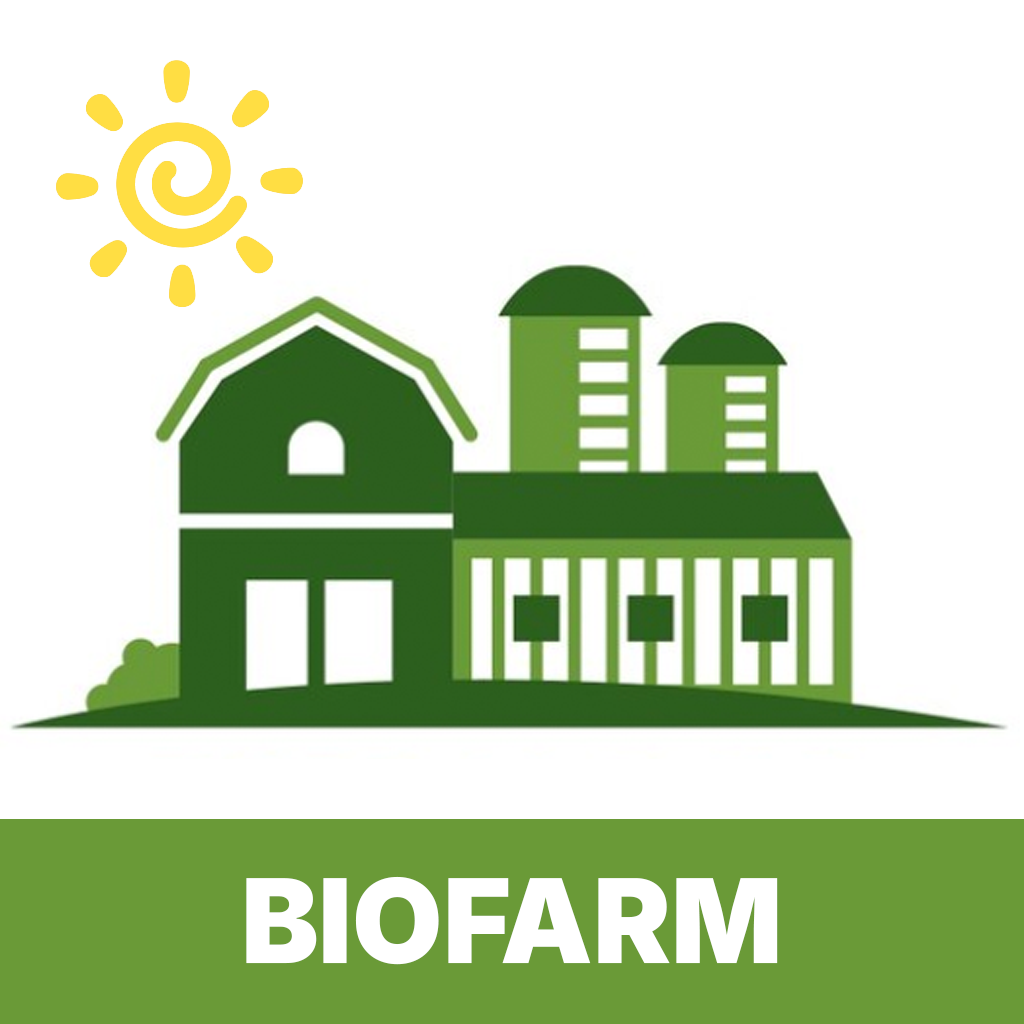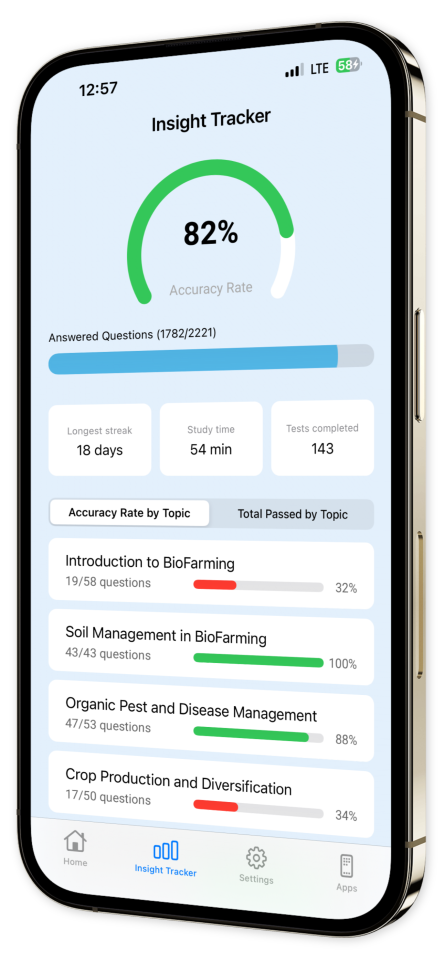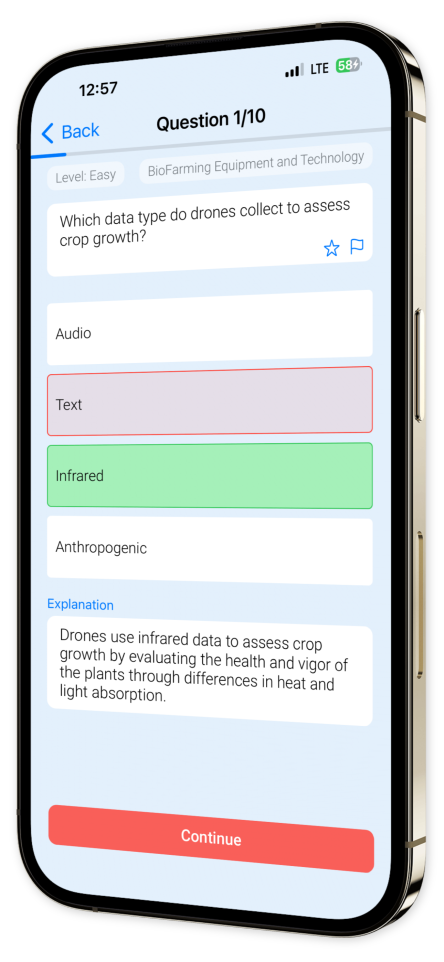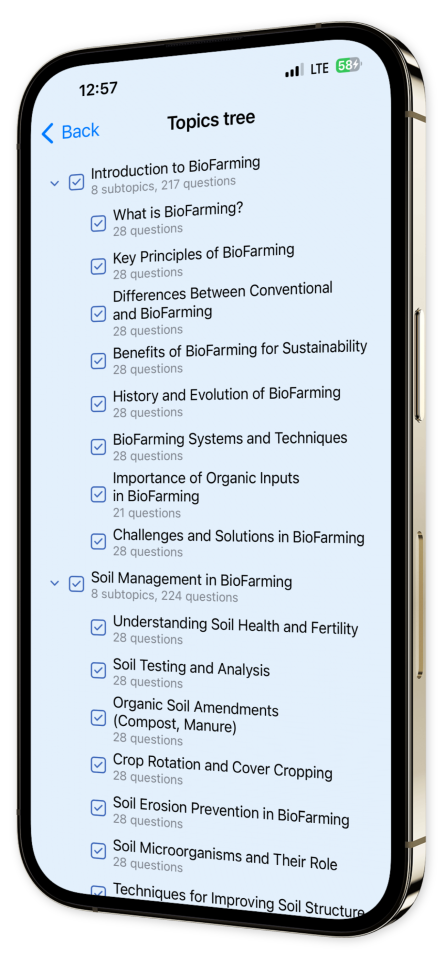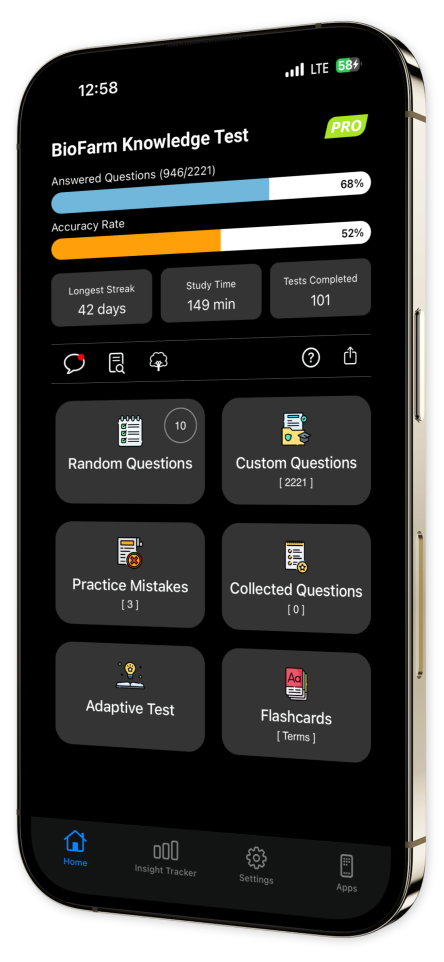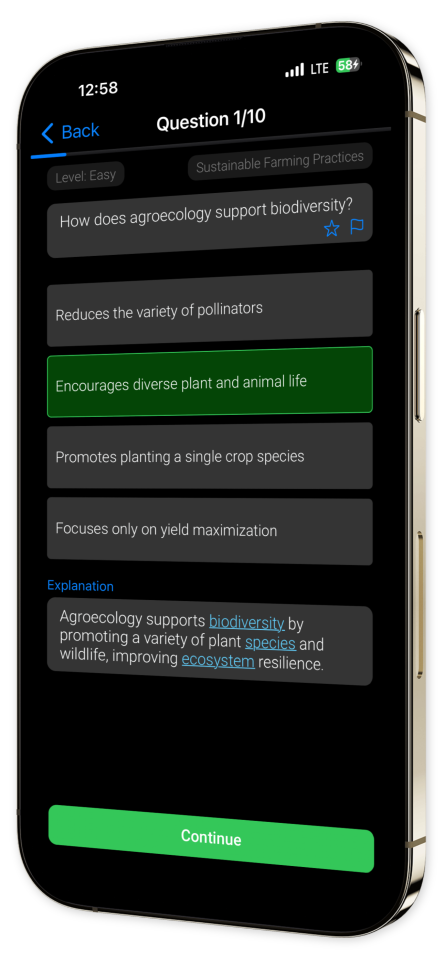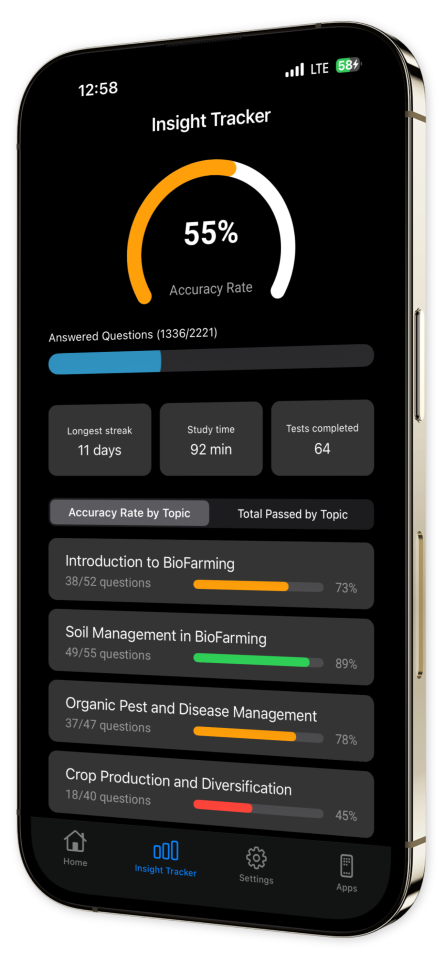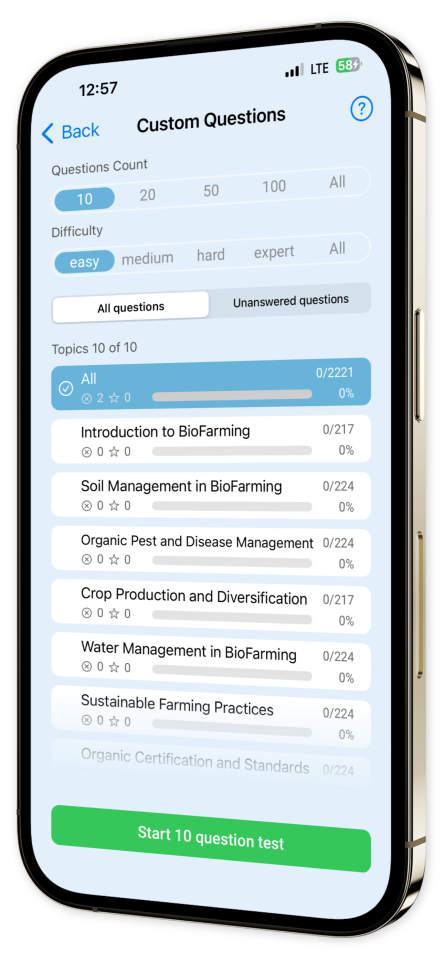
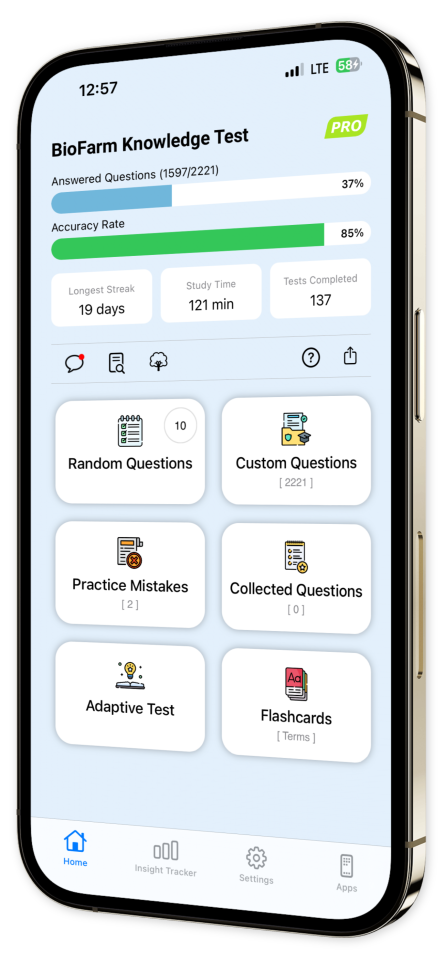
BioFarm Knowledge Test iOS
Unlock the world of BioFarming with the BioFarm Knowledge Test!
Dive into a comprehensive learning experience with a wide range of questions focused on sustainable farming practices, organic methods, and environmental conservation. Whether you're new to bio-farming or looking to refresh your knowledge, this app offers a practical way to test your understanding and discover new insights.
Key Features:
Diverse Question Bank: Test your knowledge on essential topics such as soil health, pest management, water conservation, and more.
Detailed Explanations: Each question is paired with thorough explanations, helping you gain a deeper understanding of bio-farming principles.
Track Your Progress: Keep track of your learning journey with intuitive progress tracking features. Identify areas for improvement and enhance your knowledge.
Customizable Quizzes: Create personalized quizzes to focus on specific farming topics, helping you target areas where you need more practice.
Offline Access: Learn anytime, anywhere, with offline access to all quizzes and study materials.
Download the BioFarm Knowledge Test now and start testing your knowledge in the exciting world of sustainable farming.
Enhance your understanding, challenge your skills, and grow your expertise in bio-farming today!
Content Overview
Explore a variety of topics covered in the app.
Example questions
Let's look at some sample questions
A benefit of BioFarming is the preservation of:
Soil nutrientsSynthetic chemicalsGenetically modified cropsEnergy consumption
BioFarming techniques help maintain and enhance soil nutrient levels naturally.
What is the role of compost in biofarming?
Replace all soilAct as a pesticideProvide natural nutrientsEnhance crop yield with chemicals
Compost provides essential natural nutrients that enrich the soil, promoting healthy plant growth without chemicals.
Calculate annual crop yield sustainably increased by 5% from 1000 tons.
1050 tons1005 tons1100 tons1025 tons
Initial yield = 1000 tons; Increase = 5%: Calculate 5% of 1000 = 1000 * 0.05 = 50 tons; New yield = 1000 + 50 = 1050 tons. Calculation verified thrice.
How does biofarming help in carbon sequestration compared to conventional methods?
Increases carbon emissionsReduces organic matterPromotes soil organic carbon storageUses fossil fuel-based inputs
Biofarming enhances the organic matter in soil, leading to increased carbon sequestration. 'Regenerative Agriculture' by Gabe Brown discusses these methods.
Which farming method typically uses genetically modified seeds?
ConventionalBiofarmingNoneBoth
Conventional farming often uses GM seeds to increase yields, which are generally not used in biofarming.
Which farming practice aims to preserve biodiversity as a primary goal?
BiofarmingConventional farmingIndustrial farmingMechanized farming
Biofarming emphasizes biodiversity through diverse crops and ecosystems, whereas conventional farming often involves monoculture practices.
Quantify the difference in water usage per ton of crop between conventional (2000L) and biofarming (1800L).
200L more for bio200L more for conventional500L less for bioEqual water usage
Conventional uses 2000L/ton, bio uses 1800L/ton. Difference: 2000L - 1800L = 200L more for conventional. Checked calculations confirm consistent 200L difference.
Calculate the yield difference (tons) if biofarming produces 20% less than conventional farms yielding 50 tons.
10 tons40 tons50 tons60 tons
Conventional yields are 50 tons. Biofarming yields: 50 - (0.20 × 50) = 50 - 10 = 40 tons. Verification: (1) 0.20 × 50 = 10, (2) 50 - 10 = 40, (3) verifying again, 50 - 10 = 40.
Which practice in biofarming helps maintain soil fertility?
Crop rotationMonocultureSlash and burnDeforestation
Crop rotation prevents nutrient depletion and improves soil structure.
Why is biofarming advantageous for long-term food security?
Decreases soil fertilityPromotes soil degenerationEnhances soil qualityDepends on synthetic inputs
Biofarming improves soil health through organic practices, leading to sustained soil productivity and long-term food security.
